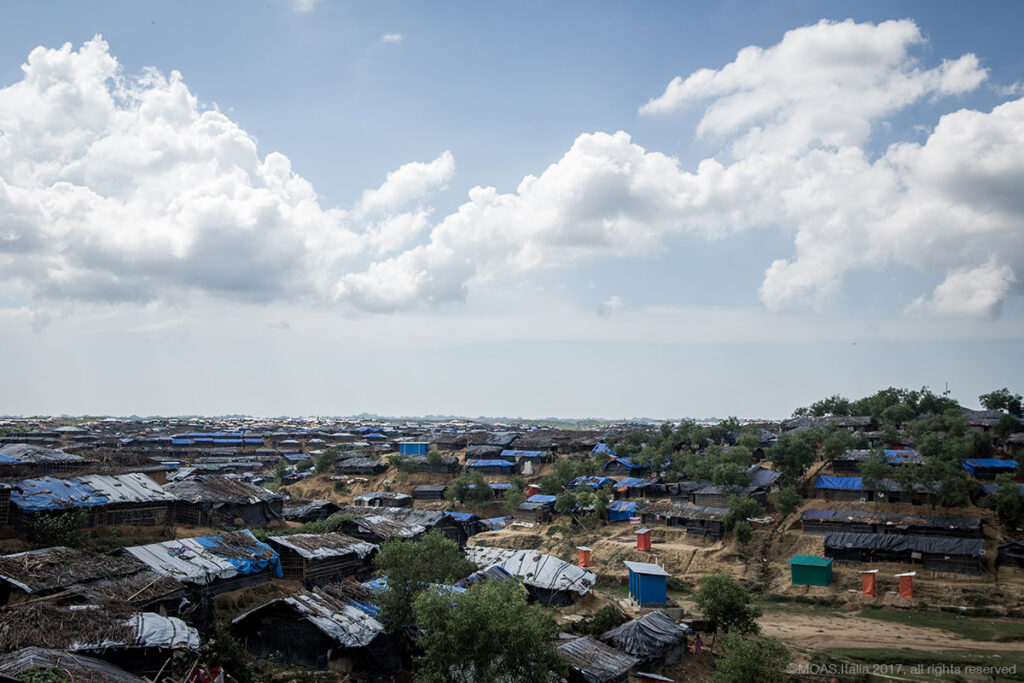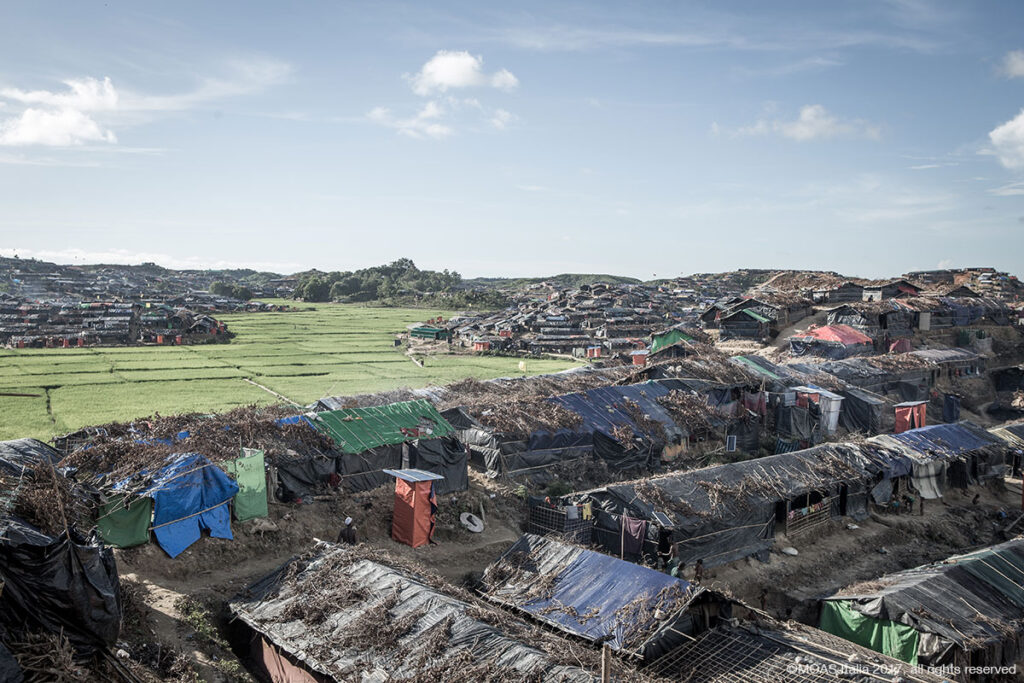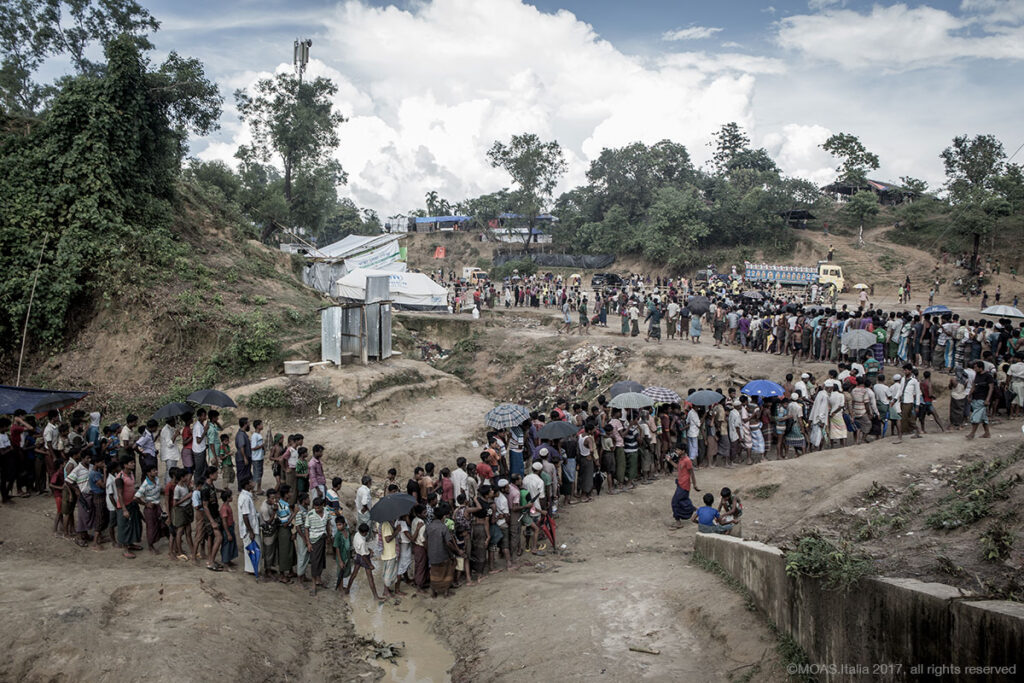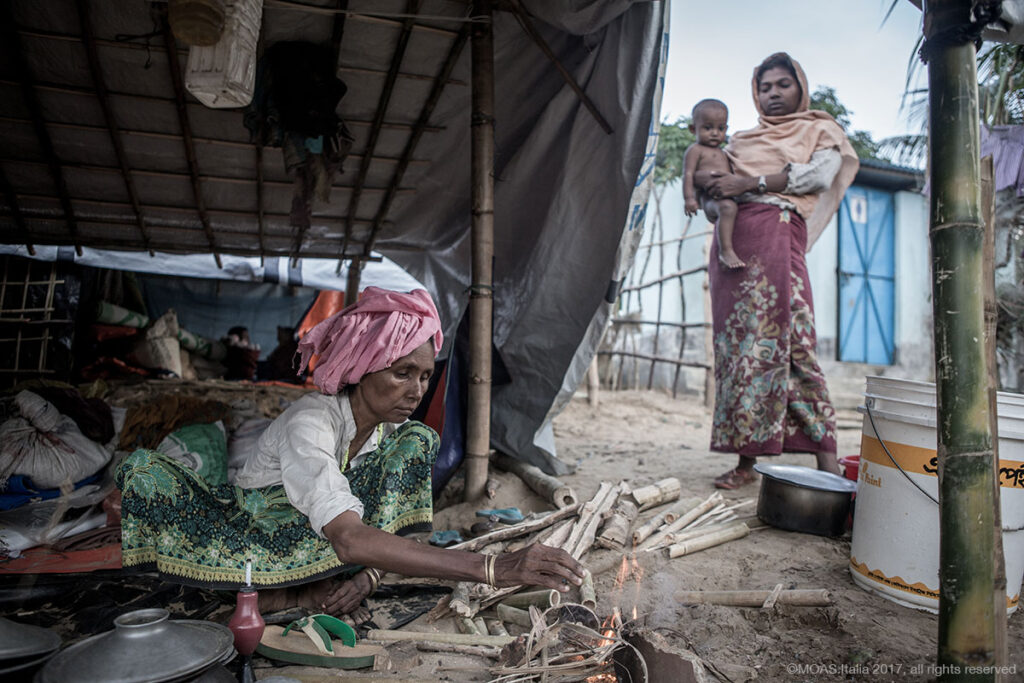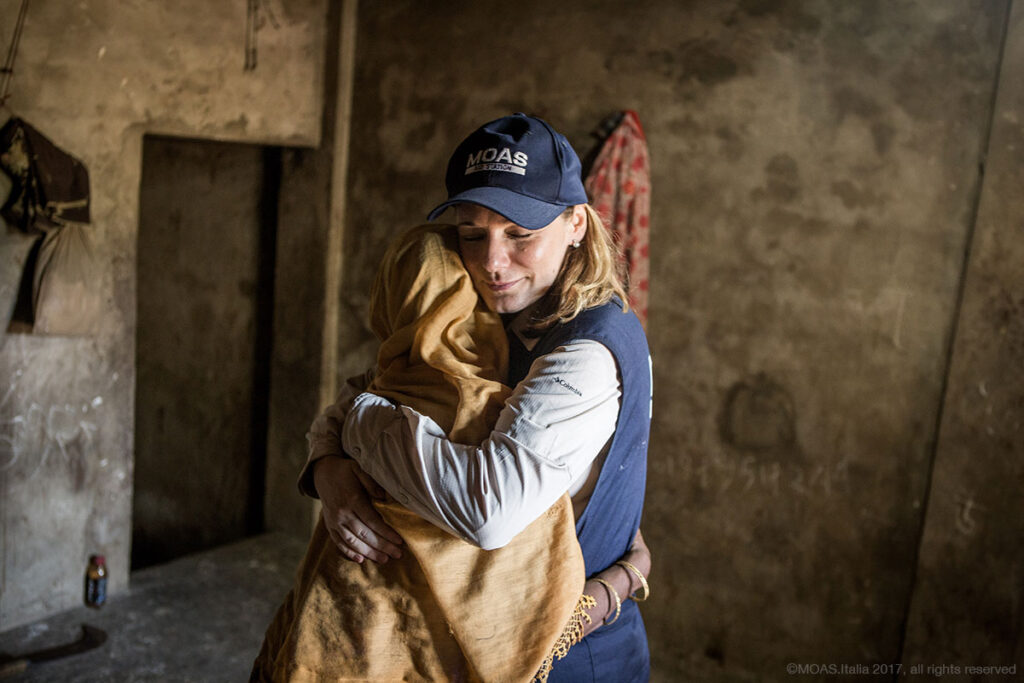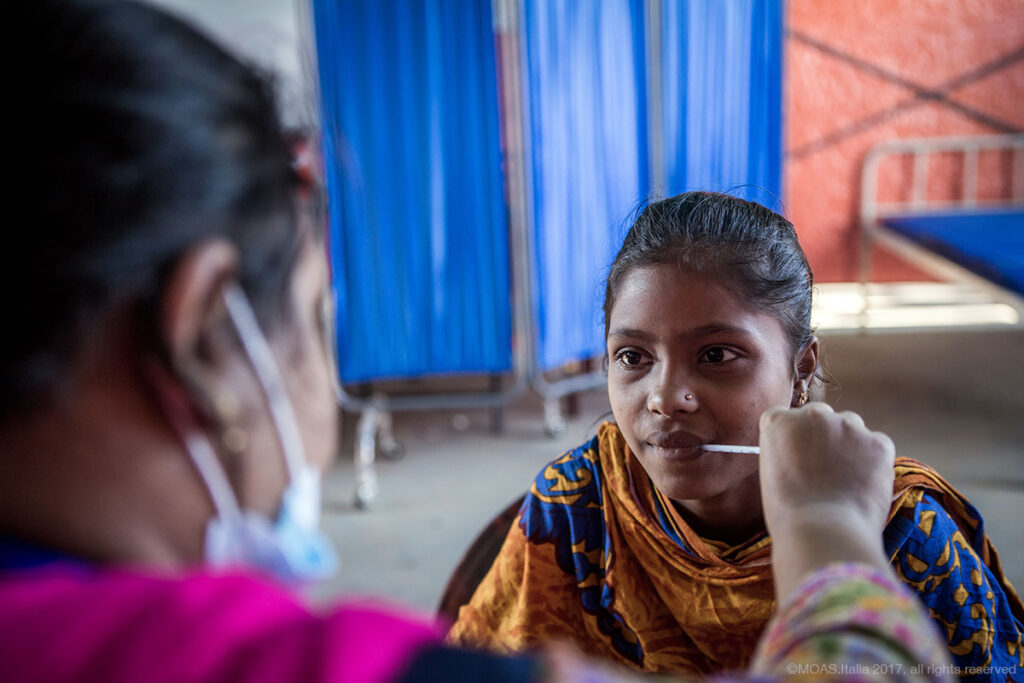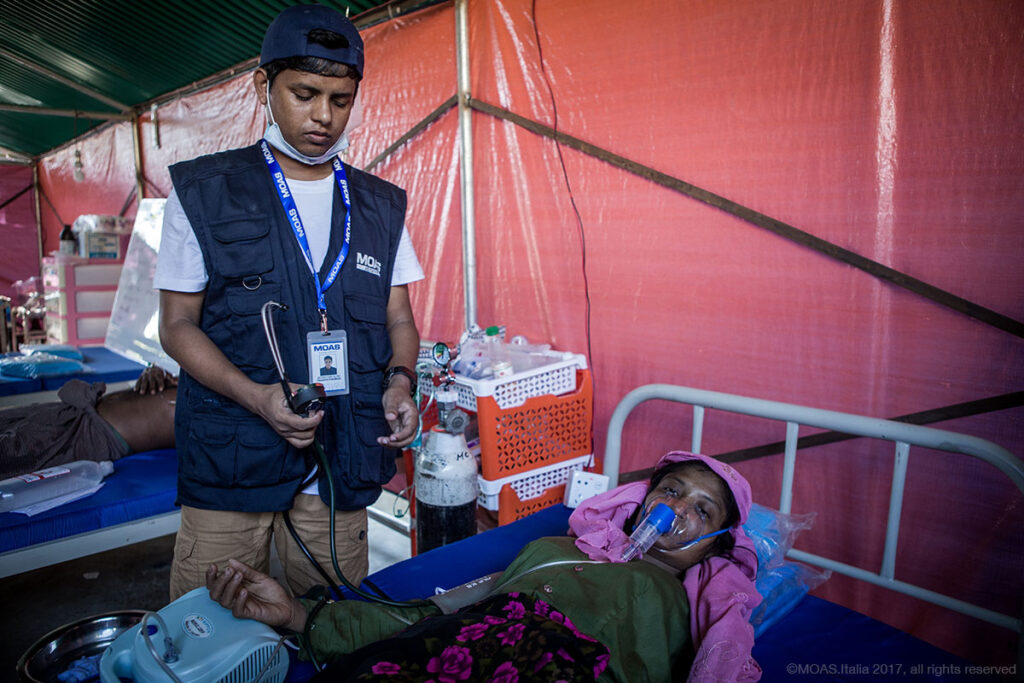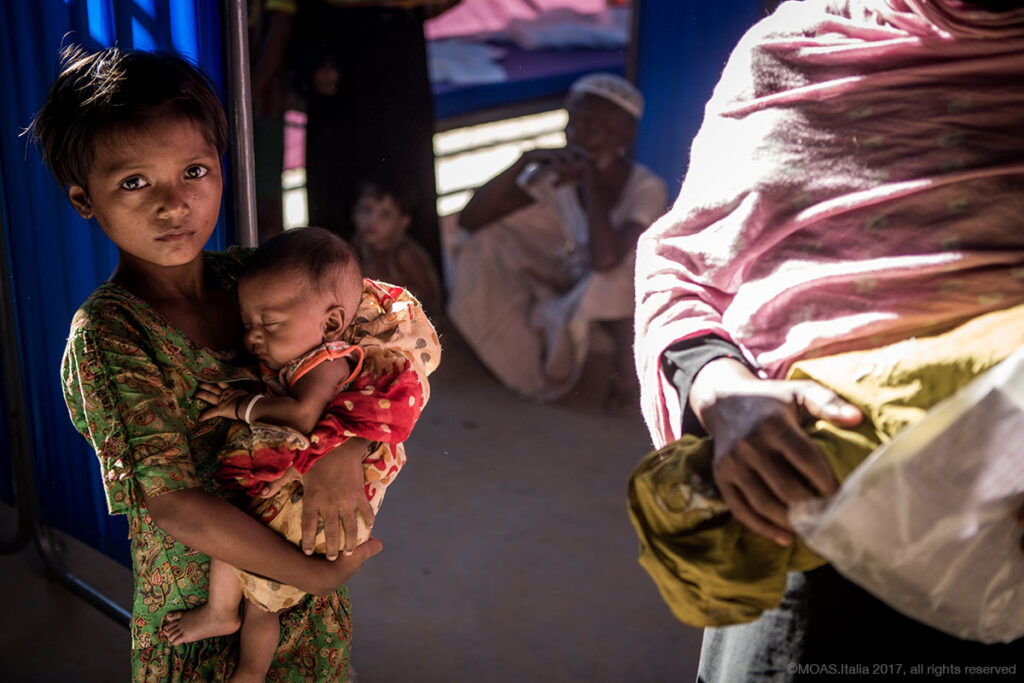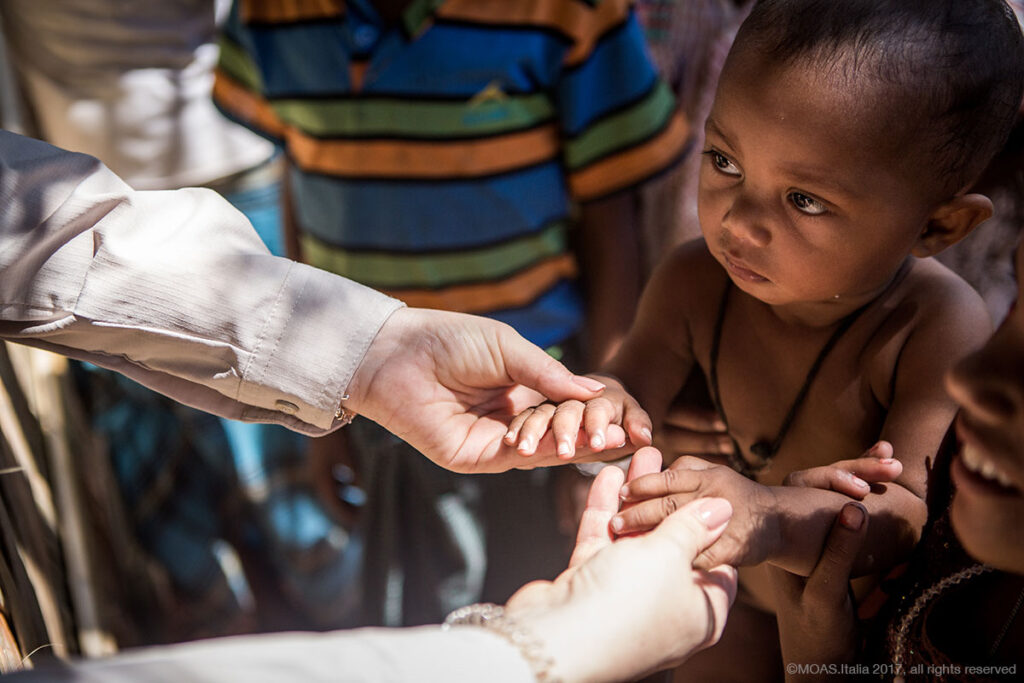Over the past two months, more than 600,000 Rohingya refugees have fled to Bangladesh, itself a developing nation and one of the most disaster-prone countries in the world. Refugees must make long, dangerous journeys, and arrive with few belongings and in dire need of medical assistance. As yet more desperate people arrive every day, the humanitarian crisis in Bangladesh grows ever more serious.
MOAS has been on the ground in Bangladesh from the beginning of the crisis, working to establish our Aid Stations while also bearing witness to the plight of the Rohingya. Here, we share some of the most powerful images from our time in Bangladesh so far.
1. Makeshift tents in Kutupalong, Bangladesh, stretch as far as the eye can see. This Rohingya settlement, the largest and oldest in the region, is home to an estimated 400,000 refugees.
2. Conditions in the settlements are dire. With cramped conditions, little access to safe water, sanitation and medical services, the risk of an outbreak of communicable disease is high.
3. Refugees queue for many hours to be given their allocation of food aid from the centralized distribution centres run by national agencies and NGOs. Rice, oil and high calorie biscuits are staples of the packages.
4. Unchiprang is one of the smaller camps with a population of approximately 35,000, but with 60% of inhabitants children with an estimated 25% incidence rate of acute malnutrition the need for food and medical aid remains urgent.
5. Women and children make up an overwhelming majority of the Rohingya refugee population. Childcare and cooking duties are shared among the community as women struggle to feed their families using basic cooking facilities and limited food supplies.
6. MOAS Director, Regina Catrambone, embraces mother of seven, Jaru on a field visit to Shamlapur. Jaru fled Myanmar with her children after her husband was killed and their home burned in the escalating violence.
7. A patient is treated at the first MOAS Aid Station in Shamlapur where Rohingya refugees and local Bangladeshi can get free medical treatment from the MOAS team, who see up to 300 patients per day.
8. A patient recovers in the MOAS Aid Station’s recovery suite having been treated for respiratory distress. The Aid Station is also furnished with a triage area, pharmacy, maternity room and surgical space.
9. The most common ailments seen in children by the MOAS medical team include respiratory illness, fever, diarrhoea and malnutrition.
10. MOAS’ aim is to continue establishing and running Aid Stations throughout the Cox’s Bazar region to provide medical care and support to those who need it most.
Keep up to date on our progress here and on our social media platforms or by signing up to our newsletter at the bottom of this page and please, donate what you can to MOAS to help us provide medical care, medication, ambulance services and much more to these communities in need.

